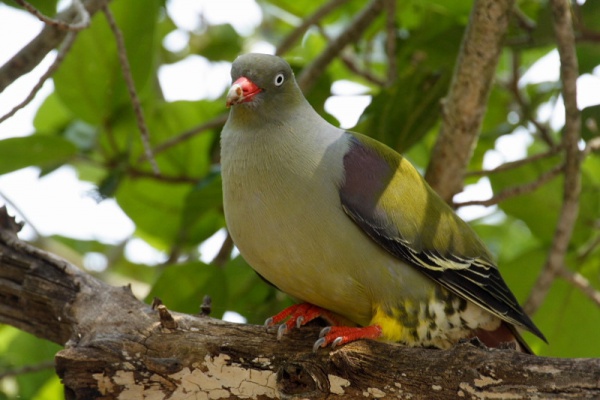Facts About African green pigeon
The African green pigeon, a captivating bird from the Columbidae family, is one of five green pigeon species native to the Afrotropics. With approximately 17 recognized subspecies, these birds are prevalent throughout Sub-Saharan Africa. Adult African green pigeons are distinguished by their maroon shoulder patches—olive-colored in juveniles—and rufous undertail coverts. They typically measure between 25 and 28 cm in length.
These pigeons are often found in high densities and are known for their regular local movements. Their habitat extends across numerous countries, including Angola, Botswana, Ghana, Kenya, Nigeria, South Africa, Tanzania, Uganda, Zambia, and Zimbabwe. They thrive in riparian forests, woodlands, and savannas, frequently seen around fruiting trees such as wild figs and various ornamentals. Their diet is diverse, encompassing fruits from trees like Saffrons, Jacket plum, Buffalo thorn, Water berry, and Jackalberry. Occasionally, they also consume exotic fruits and even carrion.
African green pigeons are adept at foraging in tree canopies, employing their parrot-like climbing skills to access fruits. Their communications consist of a series of flowing whistles. For nesting, they construct simple platforms of sticks in tree forks, with breeding potentially occurring throughout the year. They typically lay 1-2 eggs which hatch after 13-14 days, and the chicks are ready to fledge at about 12 days old.

 Republic of the Congo
Republic of the Congo